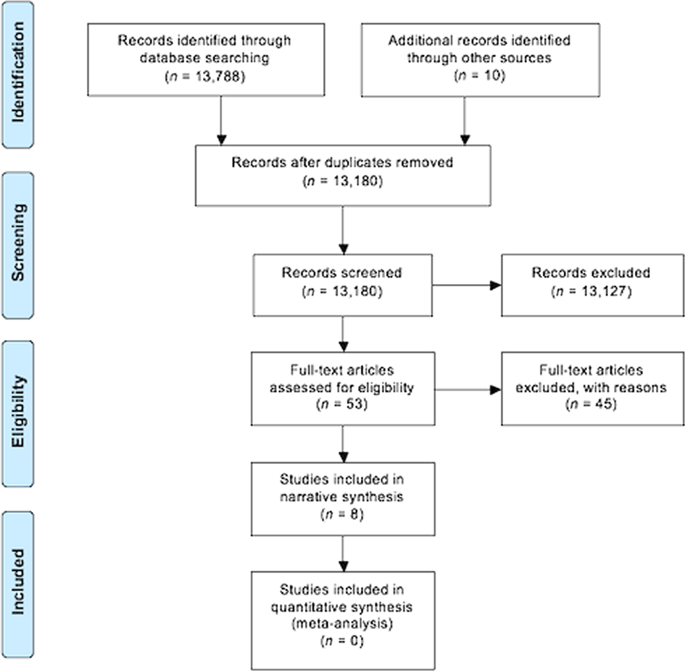当前位置:
X-MOL 学术
›
npj Prim. Care Respir. Med.
›
论文详情
Our official English website, www.x-mol.net, welcomes your feedback! (Note: you will need to create a separate account there.)
Systematic review of clinical prediction models to support the diagnosis of asthma in primary care.
npj Primary Care Respiratory Medicine ( IF 3.1 ) Pub Date : 2019-05-09 , DOI: 10.1038/s41533-019-0132-z Luke Daines 1 , Susannah McLean 1 , Audrey Buelo 2 , Steff Lewis 3 , Aziz Sheikh 1 , Hilary Pinnock 1
npj Primary Care Respiratory Medicine ( IF 3.1 ) Pub Date : 2019-05-09 , DOI: 10.1038/s41533-019-0132-z Luke Daines 1 , Susannah McLean 1 , Audrey Buelo 2 , Steff Lewis 3 , Aziz Sheikh 1 , Hilary Pinnock 1
Affiliation

|
Diagnosing asthma is challenging. Misdiagnosis can lead to untreated symptoms, incorrect treatment and avoidable deaths. The best combination of clinical features and tests to achieve a diagnosis of asthma is unclear. As asthma is usually diagnosed in non-specialist settings, a clinical prediction model to aid the assessment of the probability of asthma in primary care may improve diagnostic accuracy. We aimed to identify and describe existing prediction models to support the diagnosis of asthma in children and adults in primary care. We searched Medline, Embase, CINAHL, TRIP and US National Guidelines Clearinghouse databases from 1 January 1990 to 23 November 17. We included prediction models designed for use in primary care or equivalent settings to aid the diagnostic decision-making of clinicians assessing patients with symptoms suggesting asthma. Two reviewers independently screened titles, abstracts and full texts for eligibility, extracted data and assessed risk of bias. From 13,798 records, 53 full-text articles were reviewed. We included seven modelling studies; all were at high risk of bias. Model performance varied, and the area under the receiving operating characteristic curve ranged from 0.61 to 0.82. Patient-reported wheeze, symptom variability and history of allergy or allergic rhinitis were associated with asthma. In conclusion, clinical prediction models may support the diagnosis of asthma in primary care, but existing models are at high risk of bias and thus unreliable for informing practice. Future studies should adhere to recognised standards, conduct model validation and include a broader range of clinical data to derive a prediction model of value for clinicians.
中文翻译:

支持初级保健中哮喘诊断的临床预测模型的系统评价。
诊断哮喘具有挑战性。误诊可能导致未经治疗的症状、不正确的治疗和可避免的死亡。临床特征和测试的最佳组合以实现哮喘的诊断尚不清楚。由于哮喘通常是在非专科环境中诊断的,因此在初级保健中帮助评估哮喘概率的临床预测模型可能会提高诊断的准确性。我们旨在确定和描述现有的预测模型,以支持初级保健中儿童和成人哮喘的诊断。我们在 1990 年 1 月 1 日至 11 月 23 日期间检索了 Medline、Embase、CINAHL、TRIP 和美国国家指南信息交换所数据库。我们纳入了设计用于初级保健或同等环境的预测模型,以帮助临床医生评估有哮喘症状的患者的诊断决策。两名审稿人独立筛选标题、摘要和全文的资格,提取数据并评估偏倚风险。从 13,798 条记录中,审查了 53 篇全文文章。我们纳入了七项建模研究;所有人都处于高偏倚风险中。模型性能各不相同,接收操作特性曲线下的面积从 0.61 到 0.82 不等。患者报告的喘息、症状变异性和过敏史或过敏性鼻炎与哮喘有关。总之,临床预测模型可能支持初级保健中的哮喘诊断,但是现有的模型存在很高的偏差风险,因此对于告知实践而言不可靠。未来的研究应遵循公认的标准,进行模型验证并包括更广泛的临床数据,以推导出对临床医生有价值的预测模型。
更新日期:2019-05-09
中文翻译:

支持初级保健中哮喘诊断的临床预测模型的系统评价。
诊断哮喘具有挑战性。误诊可能导致未经治疗的症状、不正确的治疗和可避免的死亡。临床特征和测试的最佳组合以实现哮喘的诊断尚不清楚。由于哮喘通常是在非专科环境中诊断的,因此在初级保健中帮助评估哮喘概率的临床预测模型可能会提高诊断的准确性。我们旨在确定和描述现有的预测模型,以支持初级保健中儿童和成人哮喘的诊断。我们在 1990 年 1 月 1 日至 11 月 23 日期间检索了 Medline、Embase、CINAHL、TRIP 和美国国家指南信息交换所数据库。我们纳入了设计用于初级保健或同等环境的预测模型,以帮助临床医生评估有哮喘症状的患者的诊断决策。两名审稿人独立筛选标题、摘要和全文的资格,提取数据并评估偏倚风险。从 13,798 条记录中,审查了 53 篇全文文章。我们纳入了七项建模研究;所有人都处于高偏倚风险中。模型性能各不相同,接收操作特性曲线下的面积从 0.61 到 0.82 不等。患者报告的喘息、症状变异性和过敏史或过敏性鼻炎与哮喘有关。总之,临床预测模型可能支持初级保健中的哮喘诊断,但是现有的模型存在很高的偏差风险,因此对于告知实践而言不可靠。未来的研究应遵循公认的标准,进行模型验证并包括更广泛的临床数据,以推导出对临床医生有价值的预测模型。


























 京公网安备 11010802027423号
京公网安备 11010802027423号